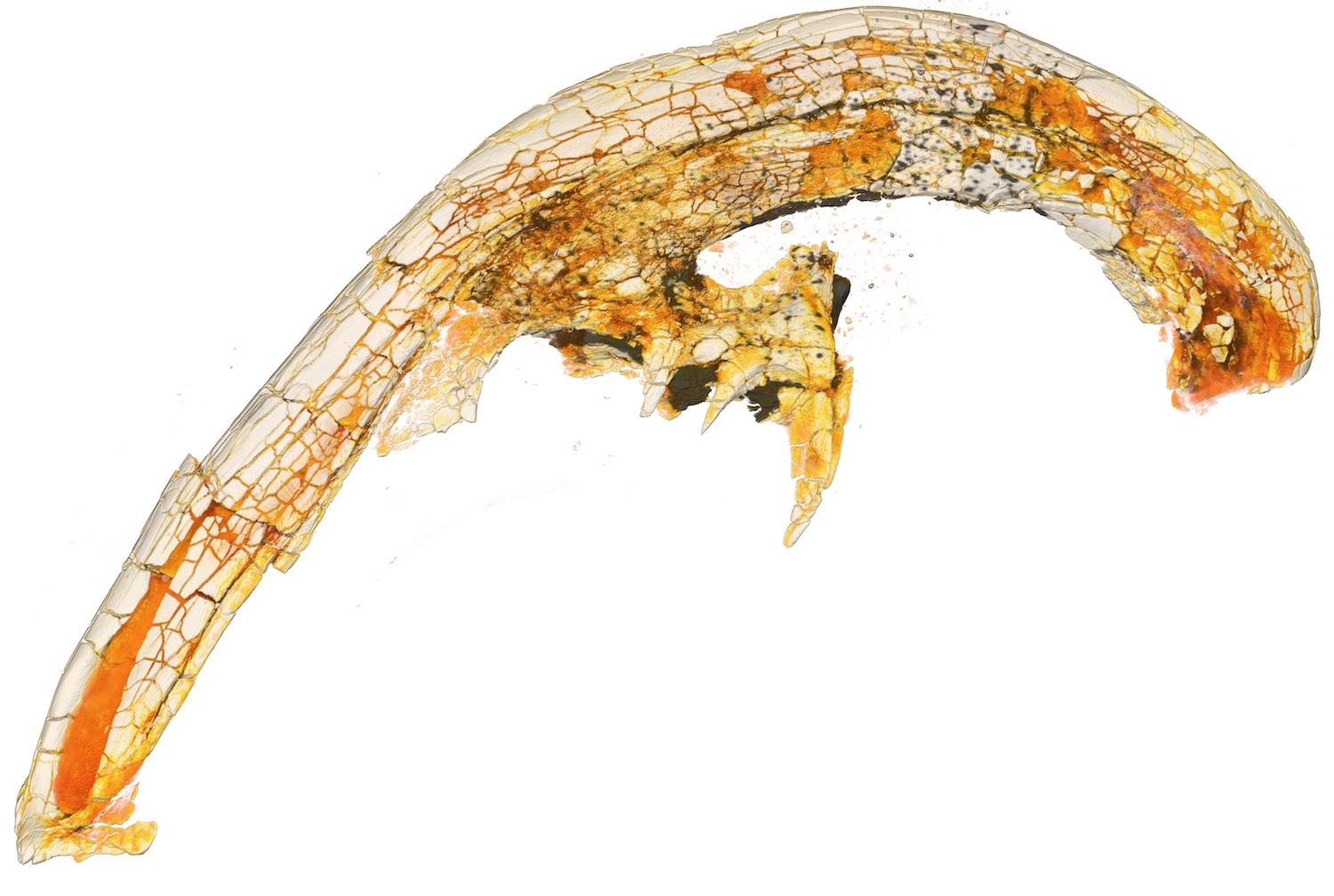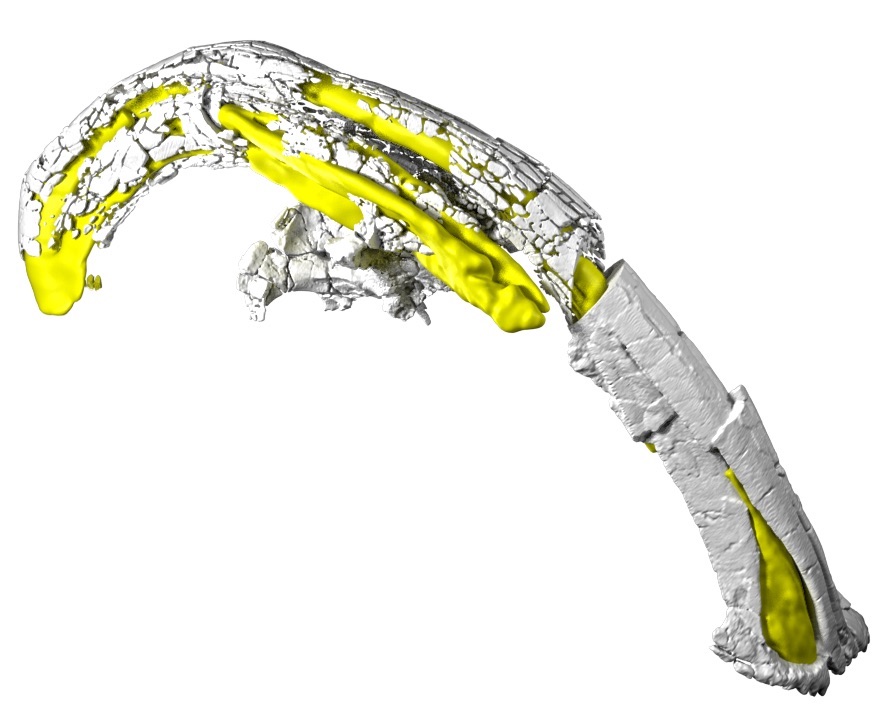These Duck-Billed Dinosaurs Wore Their Instruments on Their Heads

Different species of duck-billed dinosaurs may have "tooted" different notes out of their trumpet-like, tubular crests, new research shows.
That's the conclusion paleontologists came to after scanning and modeling the fossils of an unnamed species of Parasaurolophus — a dinosaur famous for its trumpet-like nasal passage, which connected to a hollow head crest.
The results suggest the unnamed duckbill bellowed at 56 hertz, meaning the sound fell between the low-pitched bawl of the already studied Parasaurolophus walkeri (48 hertz) and the higher-pitched hoot of P. cyrtocristatus (75 hertz), said project lead researcher Jason Bourke, an assistant professor of anatomy at the New York Institute of Technology College of Osteopathic Medicine, in Old Westbury, New York. [Album: Discovering a Duck-Billed Dino Baby]
The research, which has yet to be published in a peer-reviewed journal, was presented at the 78th annual Society of Vertebrate Paleontology meeting in Albuquerque, New Mexico, on Oct. 18.
In all, the researchers looked at the partial-to-complete skulls of five of the unnamed Parasaurolophus dinosaurs, which were discovered in the Kaiparowits formation of southern Utah in rock dating to between 76 million and 74 million years ago. After putting the skulls through a computed-tomography (CT) scanner, the researchers made a composite, 3D digital image of the duck-billed dinosaur's crest and nasal passage. This image showed that the unnamed Parasaurolophus had a crest shape that was in between that of P. walker and P. cyrtocristatus.

As for its status as the "unnamed Parasaurolophus" — it's still unclear if the dinosaur is a previously unknown species; or whether its anatomy looks different because it was at a different life stage (for example, a juvenile versus an adult); or a different sex (that is, male versus female) than other, known Parasaurolophus species, Bourke said.
Bellowing duck bills
It's anyone's guess what dinosaurs sounded like, because vocal cords — which are made of soft tissue — usually don't fossilize. But thanks to its spectacular nasal cavity and crest, Parasaurolophus "is a poster child for sound production in dinosaurs," Bourke told Live Science.
Sign up for the Live Science daily newsletter now
Get the world’s most fascinating discoveries delivered straight to your inbox.
In the new research, Bourke and his colleagues found that the unnamed Parasaurolophus had a more extensive loop-de-loop system in its crest than previous research on other Parasaurolophus dinosaurs suggested. "[The air] goes up, back, up and back again," Bourke said. "It's a series of switchbacks." [Photos: Duck-Billed Dinos Found in Alaska]
All of these loops extended the creature's airway. "It gives it almost an extra meter of length," Bourke said. This extra length decreases the pitch, giving it a lower sound, Bourke said.

If the team's findings extend to other Parasaurolophus dinosaurs, then it's possible that P. walker and P. cyrtocristatus generated lower toots than previously realized, the researchers said.
"If our interpretations are right, then Parasaurolophus was just going through extra lengths to lower that frequency," Bourke said.
To determine the hertz for the unnamed dinosaur, the scientists simulated air flowing through the digital model, which had added virtual soft tissue, at 1 meter/second (3.2 feet/second). "It's just shy of 3 meters, so theoretically, if this animal was breathing in at a meter a second, it took 3 seconds for one molecule of air to go all of the way through this," Bourke said. "So, it's pretty crazy."
The new research is "exciting because it uses state-of-the-art technology to extract information about the behavior of these dinosaurs from their fossilized skulls," said Caroline Rinaldi, an associate professor of anatomy at the University of Texas Southwestern Medical Center, who was not involved in the project.
"We can never be exactly certain what sounds these dinosaurs actually made," Rinaldi told Live Science in an email."But the authors used an innovative combination of physics and physiological principles to develop a hypothesis that different species of Parasaurolophus (with different crest shapes), produced sounds of different frequencies."
Originally published on Live Science.

Laura is the archaeology and Life's Little Mysteries editor at Live Science. She also reports on general science, including paleontology. Her work has appeared in The New York Times, Scholastic, Popular Science and Spectrum, a site on autism research. She has won multiple awards from the Society of Professional Journalists and the Washington Newspaper Publishers Association for her reporting at a weekly newspaper near Seattle. Laura holds a bachelor's degree in English literature and psychology from Washington University in St. Louis and a master's degree in science writing from NYU.










